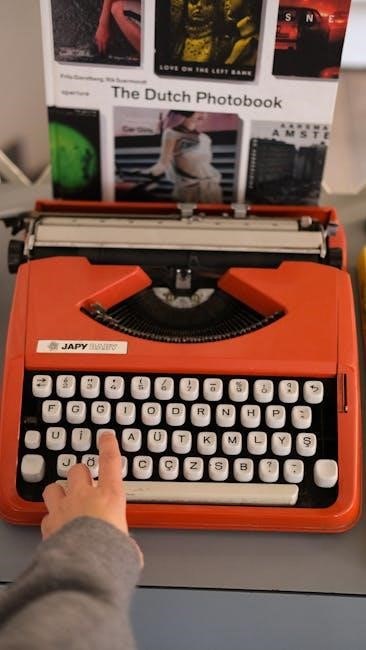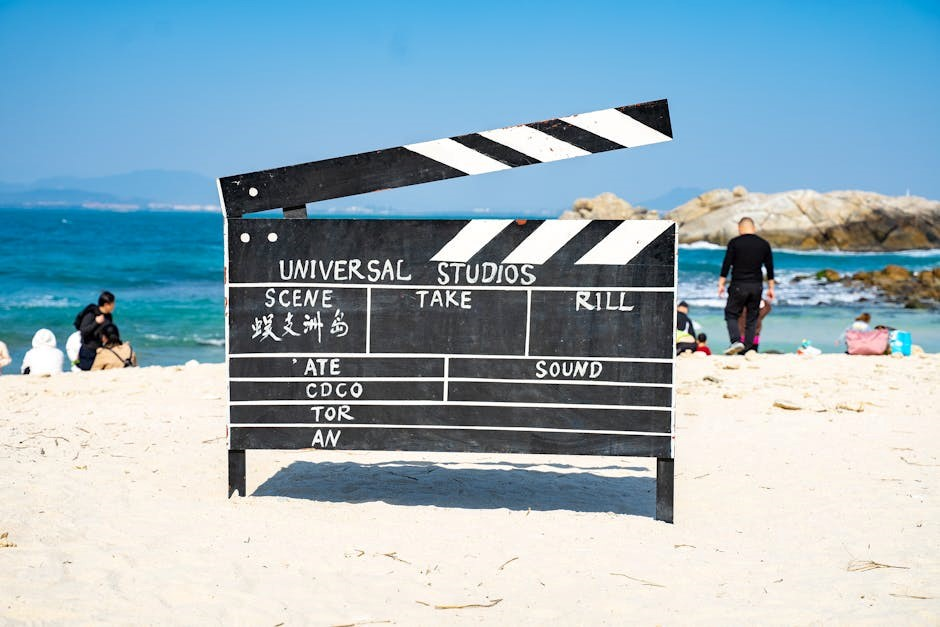Film analysis involves critically examining movies to understand their themes, narratives, and cinematic techniques. It requires engaging with visual and auditory elements to uncover deeper meanings and artistic intentions.
Understanding the Basics of Film Study
Film study is a multidisciplinary approach that combines critical thinking, technical analysis, and cultural context to explore how films communicate ideas and emotions. It involves examining elements like theme, genre, and visual style to uncover a film’s deeper meanings. Students of film learn to analyze scenes, characters, and narratives to understand storytelling techniques and artistic choices. This foundation also includes exploring how films reflect or challenge societal norms, historical events, and cultural values. By breaking down a film into its components, such as cinematography, sound, and editing, analysts can better appreciate its craftsmanship and message. Film study also encourages viewers to consider their own interpretations and how personal experiences influence their understanding of a film. Ultimately, it fosters a deeper appreciation for cinema as both an art form and a medium of communication.
The Importance of Critical Thinking in Film Writing
Critical thinking is essential in film writing as it enables analysts to move beyond surface-level observations and delve into the complexities of a film. It involves questioning assumptions, evaluating evidence, and forming well-supported arguments. By applying critical thinking, writers can uncover themes, analyze character motivations, and explore the cultural or historical contexts that shape a film’s narrative. This skill also helps in identifying biases, challenging stereotypes, and considering multiple perspectives. In film writing, critical thinking fosters a deeper understanding of cinematic techniques, such as mise-en-scène, cinematography, and sound design, allowing writers to connect these elements to the film’s overall message. Moreover, it encourages writers to reflect on their own interpretations and how personal experiences influence their analysis. Ultimately, critical thinking elevates film writing from mere description to insightful commentary, making it a vital tool for meaningful cinematic analysis.
Key Elements of Film
Films are composed of key elements like theme, plot, character, and style, each contributing to the storytelling process and emotional impact, shaping the audience’s experience.
Theme: Identifying and Analyzing Central Ideas
The theme of a film represents its underlying message or idea, often reflecting universal truths or societal commentary. Identifying the theme involves analyzing recurring motifs, character interactions, and visual elements that reinforce the central idea. Themes are rarely stated outright but are instead implied through dialogue, actions, and symbolic imagery. To analyze a theme effectively, one must consider how it evolves throughout the narrative and how it resonates with the audience. Themes often explore complex human experiences, such as love, redemption, or identity, making films relatable and thought-provoking. By examining how themes are developed and conveyed, viewers gain a deeper understanding of the filmmaker’s vision and the cultural context in which the film was created.
Plot: Structure and Narrative Development
The plot of a film refers to the sequence of events that make up the narrative, carefully arranged to engage the audience and convey meaning. It typically follows a structure that includes exposition, rising action, climax, and resolution, which collectively build tension and guide the story’s progression. The plot is distinct from the story, as it represents the cinematic adaptation of events rather than the events themselves. Filmmakers use plot devices like suspense, character development, and pacing to maintain viewer interest and explore themes. While many films adhere to traditional narrative structures, others experiment with non-linear storytelling or fragmented narratives to achieve unique effects. Understanding the plot’s structure and how it contributes to the overall narrative is essential for analyzing a film’s effectiveness in communicating its message.
Character: Analysis and Development
Character analysis in film involves examining how individuals are portrayed and developed throughout the narrative. Characters serve as vehicles for storytelling, conveying themes and emotions through their actions, dialogue, and interactions. Protagonists and antagonists are central to driving the plot, while secondary characters often provide depth and context. Filmmakers use various techniques, such as dialogue, body language, and visual cues, to reveal character traits, motivations, and backstories. The development of characters can be static or dynamic, with some undergoing significant transformation and others remaining unchanged. Understanding character arcs is crucial for analyzing how they contribute to the film’s overall message. Additionally, the psychological and emotional dimensions of characters can offer insights into broader societal or human themes. Effective character development enhances audience engagement and emotional investment in the story.

Style: Visual and Aesthetic Elements
Visual and aesthetic elements in film are crucial for establishing tone, mood, and narrative depth. These elements include mise-en-scène, cinematography, and production design, which collectively create the film’s visual identity. Mise-en-scène refers to the arrangement of everything within the frame, such as setting, costumes, and actors’ placement. Cinematography involves lighting, camera angles, and movement, which guide the audience’s focus and emotional response. Color schemes, textures, and visual motifs also play a significant role in reinforcing themes and storytelling. The director’s stylistic choices often reflect their artistic vision and influence how the audience interprets the film. Analyzing these elements requires attention to detail and an understanding of how they contribute to the overall narrative and emotional impact. By examining visual style, viewers can uncover layers of meaning that enhance their appreciation of the film as a work of art.

Film Genres
Film genres categorize movies by themes, styles, or narrative structures, aiding analysis by grouping works like comedies, dramas, or horrors, each with distinct conventions and audience expectations.
Major Film Genres and Their Characteristics
Major film genres are categories that group films based on shared themes, styles, or narrative structures. Common genres include comedy, drama, horror, action, romance, and science fiction. Each genre carries distinct conventions and audience expectations. Comedy focuses on humor and lighthearted situations, often with happy endings. Drama explores serious themes and emotional depth, frequently centered on character development. Horror aims to evoke fear or suspense, using eerie settings and supernatural elements. Action emphasizes thrilling sequences, often featuring heroes and high-stakes conflicts. Romance prioritizes emotional relationships and love stories, while science fiction explores futuristic or speculative ideas. Understanding these genres helps viewers and analysts interpret films within established frameworks, making genre classification a vital tool in film study and criticism.
Genre Theory and Its Relevance to Film Analysis
Genre theory examines how films are categorized based on shared conventions, themes, and audience expectations. It provides a framework for understanding the cultural and artistic contexts of movies. By studying genres, analysts can identify patterns in storytelling, visual style, and emotional resonance. Genre theory also explores how films evolve within categories, blending or subverting traditional norms. This approach helps critics and audiences interpret films more effectively, as genres often reflect societal values and historical contexts. Understanding genre theory enhances the depth of film analysis, allowing for a richer exploration of meaning and artistic intent.
Hybrid Genres and Their Impact on Film Writing
Hybrid genres blend elements from multiple categories, creating unique narratives and challenging traditional genre boundaries. These films often combine contrasting styles, such as horror-comedy or sci-fi-western, to offer fresh perspectives. Hybrid genres allow filmmakers to experiment with storytelling, appealing to diverse audiences. They also reflect cultural shifts and evolving audience preferences. In film writing, hybrid genres encourage critics to think beyond conventional classifications, exploring how these blends create new meanings. This approach fosters innovative analysis, as hybrid films often subvert expectations and redefine genre norms. By embracing hybridity, filmmakers and writers can push creative boundaries, leading to more dynamic and engaging cinematic experiences. Hybrid genres thus play a crucial role in the evolution of film language and critical discourse.

Visual Style in Film
Visual style in film encompasses mise-en-scène, cinematography, and lighting, shaping the aesthetic and mood. These elements guide storytelling, evoke emotions, and enhance thematic depth, creating a cohesive cinematic experience.
Mise-en-Scène: Setting, Lighting, and Composition
Mise-en-scène refers to the arrangement of everything within a film frame, including setting, lighting, actors, and props. It creates mood, atmosphere, and visual storytelling, guiding audience interpretation.

Setting establishes time and place, while lighting shapes tone and emphasis. Composition organizes visual elements to direct attention and convey themes. Together, these components craft a film’s visual narrative, enhancing emotional and thematic depth.
Analyzing mise-en-scène involves examining how these elements interact to create meaning. It reveals the director’s vision and the film’s underlying messages, making it a crucial aspect of film analysis and criticism.
Cinematography: The Role of Camera and Lighting
Cinematography is the art of visual storytelling through camera work and lighting, shaping the film’s aesthetic and emotional impact. The camera’s placement, movement, and angle guide the audience’s focus, while lighting sets the mood and highlights key elements. Techniques like close-ups, wide shots, and tracking shots create dynamic compositions, influencing narrative depth. Lighting can be naturalistic or stylized, enhancing themes and atmosphere. Together, these elements craft the film’s visual language, conveying meaning beyond dialogue. Analyzing cinematography reveals how visual choices align with the story’s tone and themes, offering insights into the director’s vision. It is a fundamental aspect of film analysis, illustrating how technical artistry serves storytelling.
Sound and Music in Film
Sound and music are crucial elements in filmmaking, enhancing emotional depth, setting tone, and guiding narrative flow. They create immersion, evoke feelings, and underscore themes, vital to storytelling.

The Function of Sound in Film Narratives
Sound in film narratives serves as a powerful tool to enhance storytelling, create atmosphere, and guide audience emotions. It includes dialogue, sound effects, and music, each playing a distinct role. Diegetic sounds, originating within the film’s world, such as character dialogue or ambient noise, help establish realism. Non-diegetic sounds, like background music or voiceovers, influence mood and provide context. Sound effects, such as footsteps or closing doors, add authenticity to scenes. Music, in particular, can heighten tension, signal character emotions, or underscore themes. Together, these elements immerse viewers in the narrative, making sound an indispensable component of cinematic storytelling. Analyzing sound reveals how filmmakers craft emotional and thematic depth, shaping the audience’s interpretation of the film.
Music: Emotional and Thematic Significance
Music in film plays a vital role in evoking emotions and reinforcing thematic elements. It connects audiences to the narrative on a deeper level, often amplifying the emotional impact of scenes. Composers craft scores that align with the film’s tone, using melodies, rhythms, and harmonies to convey mood and character development. Leitmotifs, recurring musical themes, are frequently used to represent specific characters or ideas, creating a sense of continuity. Music also bridges gaps between dialogue and visuals, enhancing the storytelling process. In many cases, iconic scores become inseparable from the film’s identity, embedding themselves in cultural memory. By analyzing music’s role, viewers gain insight into how filmmakers emotionally engage audiences and underscore the film’s central themes, making music an essential element in the cinematic experience.
Film History and Context
Film history explores the evolution of cinema, shaped by cultural, social, and technological changes. Understanding historical context helps analyze how films reflect and influence societal norms and artistic movements over time.

Historical Context and Its Influence on Film
Historical context plays a crucial role in shaping films, as movies often reflect the social, political, and cultural conditions of their time. Films produced during the Great Depression, for example, frequently emphasized themes of hope and resilience, while Cold War-era films often explored fear and paranoia. Understanding the historical context in which a film was made helps viewers identify underlying messages and themes that may not be immediately apparent. Additionally, historical events have inspired countless films, with directors using cinema as a medium to comment on or reinterpret significant moments in history. The influence of historical context extends beyond themes, affecting visual style, narrative structure, and character development. By analyzing a film within its historical framework, critics and audiences can gain a deeper understanding of its artistic and cultural significance. This approach enriches film analysis and highlights cinema’s role as a mirror of society.
The Evolution of Film Technology and Techniques

The evolution of film technology and techniques has significantly shaped the art of filmmaking. From the transition from silent films to sound in the late 1920s to the introduction of color and widescreen formats in the mid-20th century, technological advancements have continually enhanced storytelling. The advent of digital technology in the 1990s revolutionized editing, special effects, and sound design, allowing for greater creative control. Modern innovations, such as CGI, 3D cinema, and virtual reality, have further expanded the possibilities of cinematic expression. These technological developments have not only improved visual and auditory experiences but also influenced narrative structures and filmmaking techniques. Understanding the historical progression of film technology provides insight into how filmmakers have adapted to new tools, ultimately enriching the medium and its ability to engage audiences. This evolution underscores the dynamic nature of cinema as both an art form and a technical craft.

Writing About Film
Writing about film requires critical analysis, clear expression of ideas, and effective use of evidence to convey interpretations of cinematic works and their cultural or artistic significance.
Developing a Clear and Concise Writing Style
Developing a clear and concise writing style is essential for effective film analysis. Clarity ensures that your ideas are easily understood, while conciseness prevents unnecessary verbosity. Avoid vague language and focus on specific, detailed observations about the film. Use precise terminology related to cinematic elements like mise-en-scène, cinematography, and sound design. Practice organizing your thoughts logically, ensuring each sentence contributes to your overall argument. Additionally, revise your work to eliminate redundant phrases and strengthen your analysis. A clear and concise style not only enhances readability but also demonstrates your mastery of film criticism. By balancing depth with brevity, you can convey complex ideas in an accessible manner, making your writing engaging and impactful for readers.
Structuring a Film Analysis Essay
Structuring a film analysis essay requires a logical and coherent approach to present your arguments effectively. Begin with an introduction that provides background information on the film, including the director, release year, and a brief synopsis. Clearly state your thesis statement, which outlines the central argument of your analysis. The body paragraphs should be organized around key themes, scenes, or cinematic elements, supported by evidence from the film. Use specific examples to illustrate your points, such as dialogue, camera techniques, or mise-en-scène. Each paragraph should focus on a single idea, ensuring clarity and depth. Conclude your essay by summarizing your main arguments and reiterating your thesis. Avoid introducing new ideas in the conclusion and instead provide a thought-provoking final statement. Proper structuring ensures your analysis is engaging, persuasive, and easy to follow.
Using Evidence and Examples Effectively

Using evidence and examples effectively is crucial in film analysis to support your arguments and engage readers. Select specific scenes, dialogue, or visual elements from the film to illustrate your points. Analyze these examples thoroughly, explaining how they relate to your thesis or interpretation. Avoid general statements; instead, ground your analysis in concrete details. For instance, describe how a particular shot composition or lighting choice reinforces the film’s theme. Use quotes from the film or descriptions of key moments to back up your claims. Properly contextualize your examples by explaining their significance within the broader narrative or cinematic style. This approach ensures your analysis is persuasive, detailed, and aligned with your argument. By integrating evidence seamlessly, you demonstrate a deep understanding of the film and strengthen your critical perspective.
